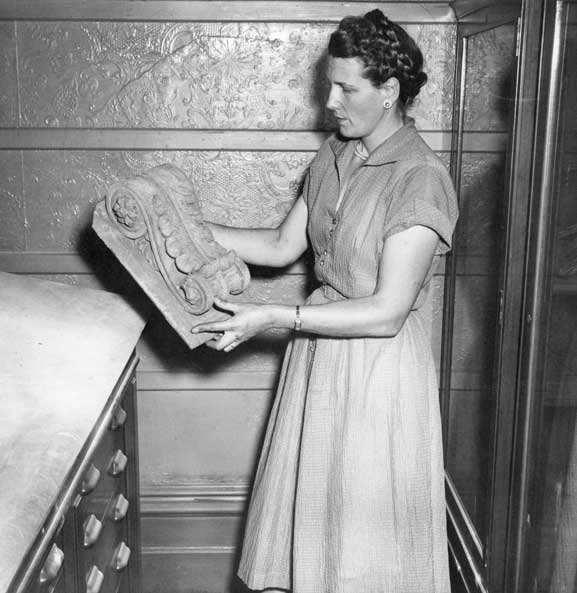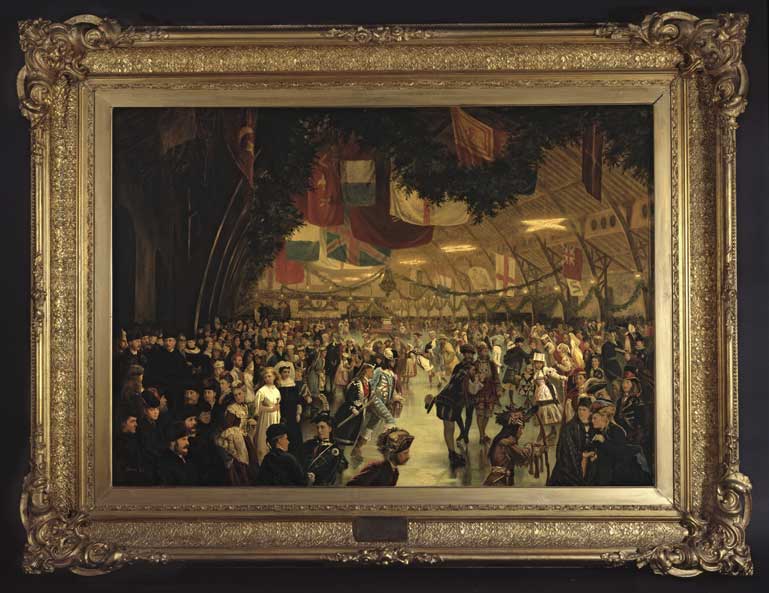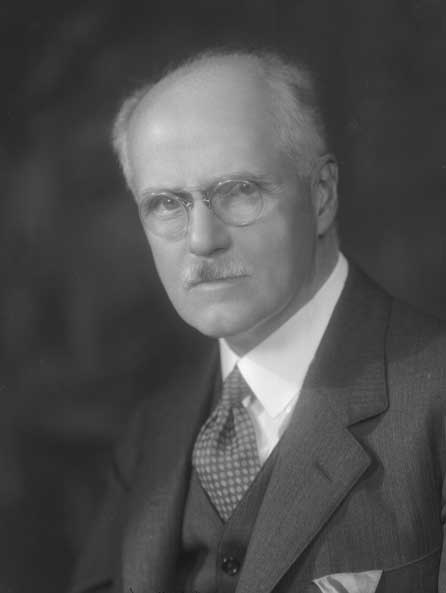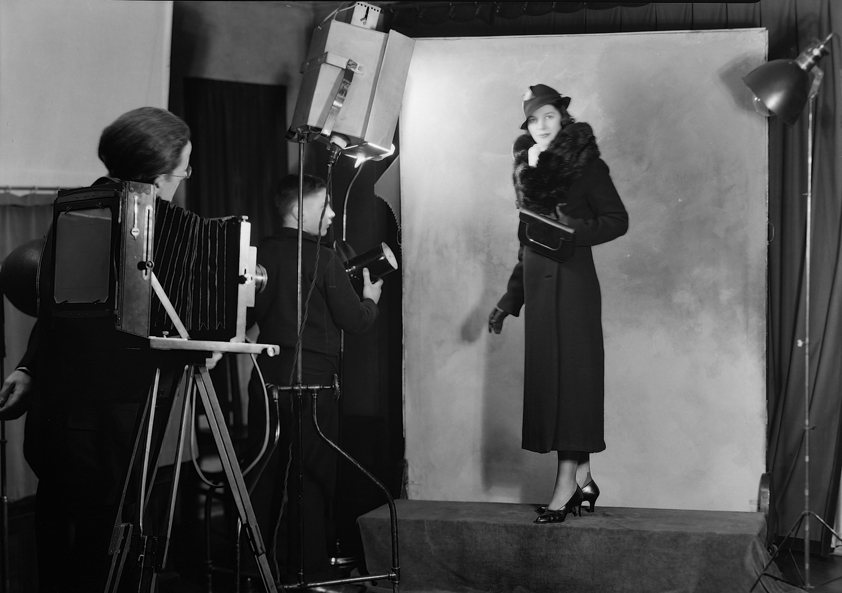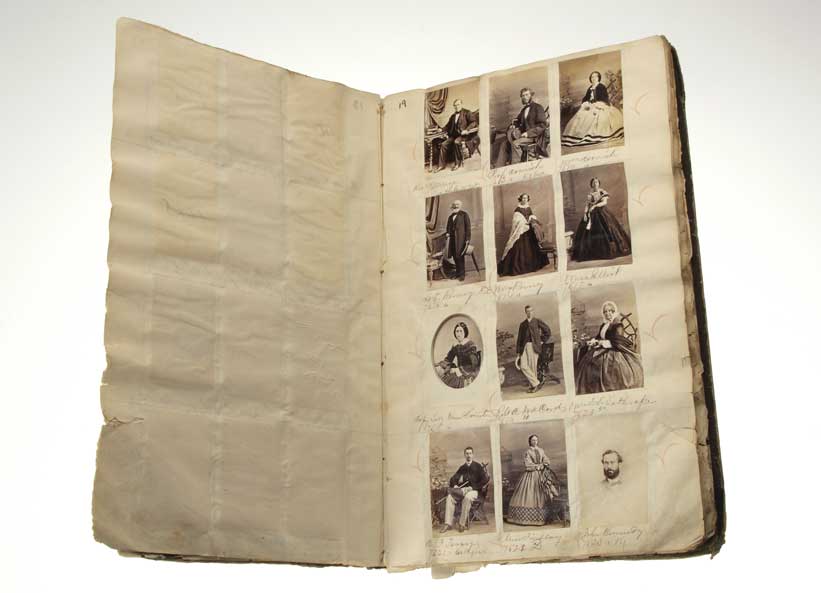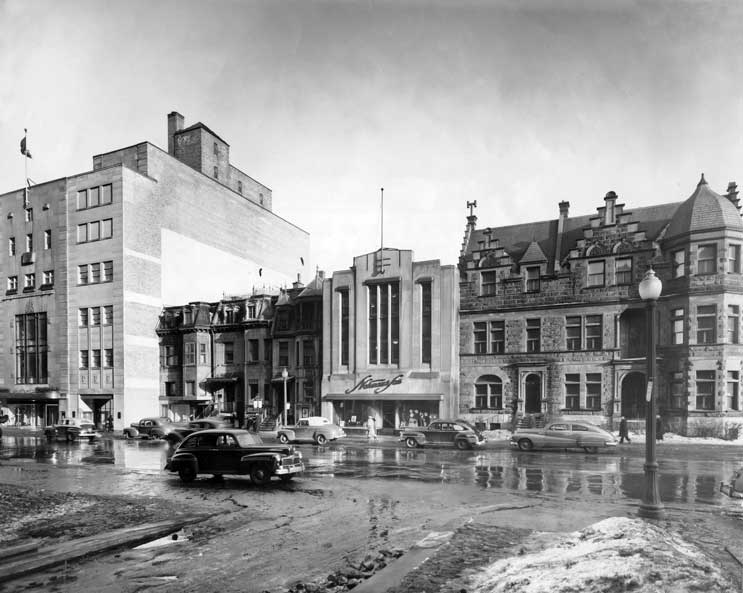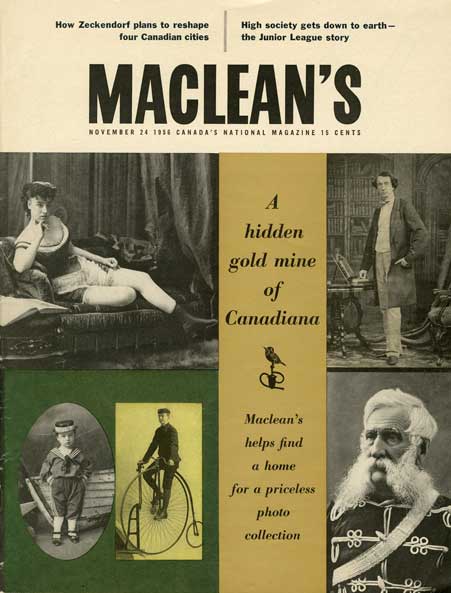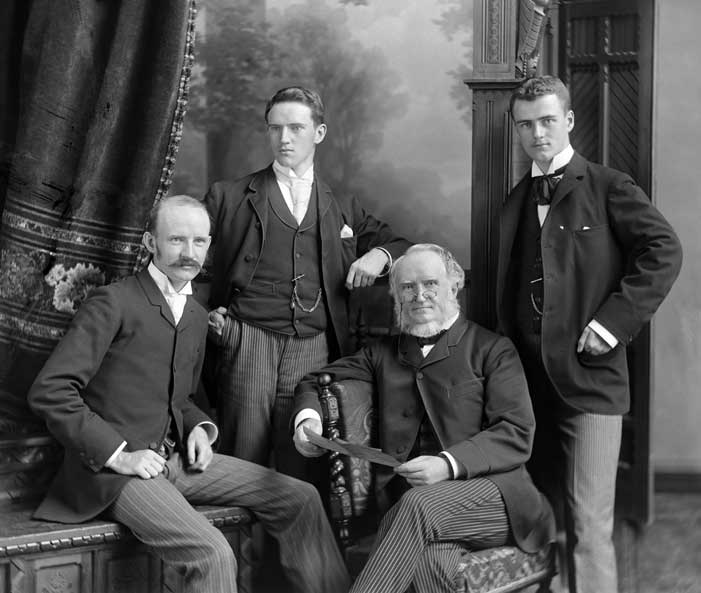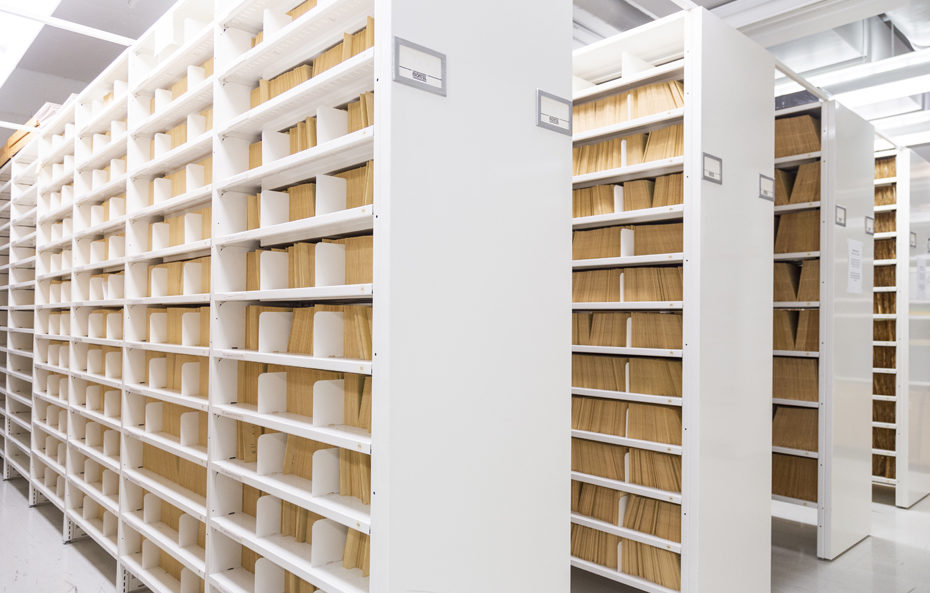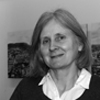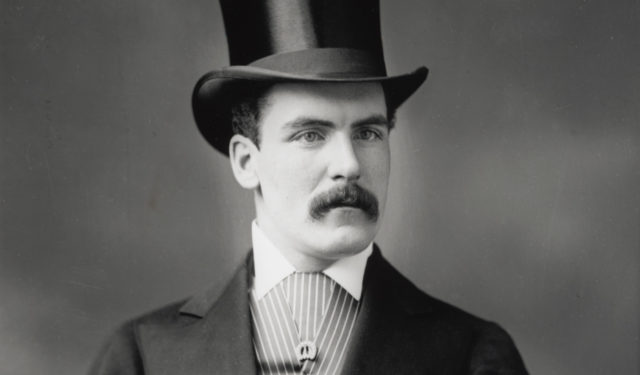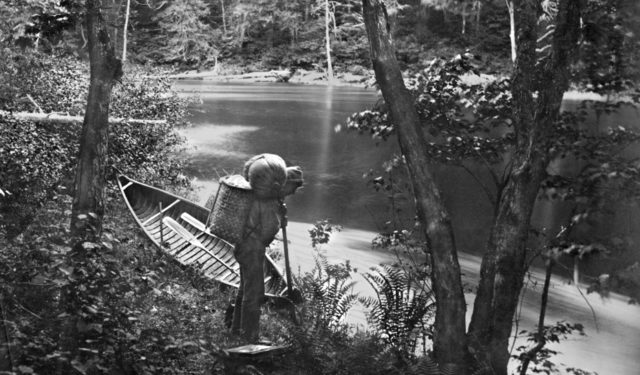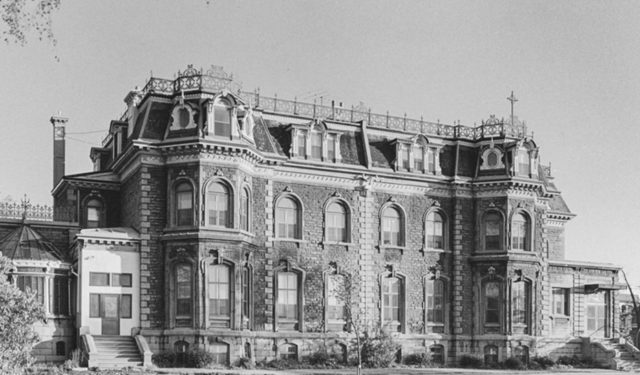The Notman Archives’ arrival at the McCord Museum
Follow the journey of the Notman Photographic Archives to the McCord Museum's reserves.
November 22, 2021
In January 1955, the McCord Museum’s collection, which had recently moved from the Joseph House to the Hodgson House, faced a monumental challenge: the potential donation of some 450,000 photographs and negatives from the Notman studio in Montreal.
Of course, the administration of such a large acquisition and the decisions regarding the storage of photographs and negatives accumulated over nearly 80 years were the subject of serious consideration, much preparation and lengthy negotiations. These responsibilities were primarily assumed by the director of the McGill University Museums, Alice Johannsen Turnham (1911-1992).
Turnham had previously signalled McGill University’s interest in acquiring the Notman photographs for the McCord Museum. Presumably William’s youngest son, Charles F. Notman (1870-1955), who had worked at the Notman studio for six decades and been its head for 25 years, also considered the Museum a wise choice to house the photographs taken by his father’s firm.
In January 1955, Charles had donated Skating Carnival, Victoria Rink 1870, a large painted composite photograph, to the McCord Museum in memory of his father William. Charles’s gift of the composite could be viewed as a sign that he considered the Museum a suitable home for the Notman studio’s historical photographs. However, although Charles had spent his entire career in the family business, the Notman studio’s historical photographs and negatives were not actually his to give.
A significant sale
An important change had marked the firm two decades earlier, in the spring of 1935, when Charles Notman sold the company to Associated Screen News (ASN). He did, however, retain a supervisory role as director and vice-president of William Notman & Son Ltd. until his retirement some 18 years later.
Founded in Montreal in 1920 as a subsidiary of Canadian Pacific Railway and headed by Bernard E. Norrish (1885-1961), ASN dedicated much of its activity to the production of newsreels and films promoting Canada. In the mid-1920s, the company incorporated still photography into its offerings. Acquiring the name William Notman & Son in 1935 enabled ASN to further expand their photographic services while benefiting from Notman’s reputation and well-established clientele.
William Notman & Son Ltd. retained its three-story location on Drummond Street at first but moved in with the parent company in December 1938, when ASN opened a photographic supply store on Sherbrooke Street West, between Crescent and de la Montagne.
Although the studio’s new shared quarters were certainly smaller than its former premises, in a basement office space, somewhere between the screening and work rooms, the company carefully stored the 188 Picture Books and accompanying Index Books dating back to the early years of the studio. The oldest negatives, those taken prior to 1935, were warehoused in the basement of the ASN head office at 2000 Northcliffe Avenue.
Another change of ownership
Charles Notman was still managing Wm. Notman & Son Ltd. as vice-president in 1953, when Bernard Norrish retired from “active direction of the company’s affairs” at ASN.1 Charles appears to have taken his own retirement not long afterwards, and the studio was bought in 1954 by two ASN employees, George A. Dudkoff (1924-2012) and Niels J. Montclair (? -1971). The two moved the firm, now called William Notman & Son Registered, to nearby Crescent Street. The oldest negatives, along with the studio’s Picture Books and Index Books, remained the property of ASN.
It was perhaps the news of Charles’s retirement or of the impending sale of the historical collection that motivated Alice Turnham to send a letter to ASN president William J. Singleton in April 1954. Turnham pointed out that the collection of Notman photographs constituted “a remarkable historical record” of Montreal and Montrealers. She explained that the McGill University Museums wished to express their “concern over the possible dispersal” of this unique collection and that
“it would be a lasting tribute to the Notman family if their collection could be placed in the care of the University, where it would be preserved indefinitely and rendered available for historians and research students of the future”.2
Singleton’s response was not particularly encouraging: “It is possible that [the collection] may be disposed of to the Public Archives of Canada at Ottawa,” he wrote, since many of the negatives “are of places other than Montreal.”3 However, Singleton did not completely rule out the possibility of a donation to McGill University and negotiations continued for another year and a half.
Three very generous donors
By December 1955, the financial aspects of the transfer had been informally settled. Thanks to a significant financial contribution from Canadian news magazine Maclean’s, along with donations from the Maxwell Cummings Family Foundation and Empire-Universal Films Ltd., the historic images were “resurrected from the dust and grime of a Montreal basement.”4
A series of seven illustrated articles on the “Fabulous Mr. Notman” appeared in Maclean’s between November 1956 and December 1958. With its wide readership and national distribution, Maclean’s helped publicize the work of William Notman and his studio, acquainting Canadian readers with some of the many gems in McGill University’s new acquisition.
A weighty problem: Where to store the negatives?
While financial hurdles relating to the donation had been overcome, the sheer size of the collection and the space needed to store it caused much concern for Alice Turnham and University staff members during the acquisition process. Options had to be explored for the hundreds of shelves that the collection would occupy, and it took the McGill University Museums a few more months to find a solution.
In January 1956, Turnham asked ASN to provide her with information on the dimensions and number of storage shelves containing the Notman negatives. Several letters to McGill University principal Cyril James (1885-1958)—who fully supported Turnham’s efforts—also document her attempts to find a suitable place to store the huge collection, even temporarily. An available space in the Redpath Library had to be ruled out when an architect determined that the weight of approximately 250,000 glass plate negatives would be too much for the structure of the room in question.
Eventually, a location was found in the basement of the Redpath Library and, in February 1956, Turnham affirmed that they had settled the “physical difficulties involved in the transfer” of the collection to McGill University and could now accept the generous offer of the three donors.5
The problem of finding permanent storage for the collection remained unresolved, however. According to a February 1956 letter from Turnham to Oscar N. Solbert (1885-1958), then director of the George Eastman House Museum of Photography in Rochester, New York, one of the solutions being considered was to eliminate a large part of the collection.
The prints (stored in the Picture Books) would be kept for study, but Turnham felt that many of the negatives would likely prove to be “historically worthless” and could be discarded. She anticipated “there would remain a good hundred thousand glass negatives,” and asked Solbert for advice on whether it was better to microfilm them and “get rid of the bulky glass” or, alternatively, to keep the originals.6 Judging from the number of negatives she believed would survive the sorting process (about a third of the collection), it would appear that Turnham was considering disposing of most of the studio portraits, which are treasured by researchers today.
Valuable guidance—and an overwhelming undertaking!
Turnham also wrote to Martha Shepard (1911-2009), director of reference services at the National Library of Canada, inquiring about microfilming the negatives. It was probably thanks to the wise advice of Martha Shepard and Beaumont Newhall (1908-1993), then curator at George Eastman House, that the glass negatives were ultimately not microfilmed and discarded.
However, the sheer size of the collection may have been the deciding factor in the choice to keep everything. Indeed, determining which of the hundreds of thousands of negatives were ” historically worthless” would have required a professional inventory of the entire collection—a colossal task.7 The integrity of the collection may well have been preserved by an inevitable inertia.
The arrival of the Notman corpus prompted the creation of a new department at the McCord Museum—one dedicated to historical photographs. In August 1962, what was initially known as the Notman Collection was given the official title of the Notman Photographic Archives.
Making the Notman Photographic Archives more accessible
Although the collection was not open to the public at the outset, researchers with widely diverse interests—including architecture, town planning, costume, genealogy, and history—showed increasing interest in the study and use of photographs they had seen in popular publications like Maclean’s, books and exhibitions, as well as on television. The cataloguing of the collection, the microfilming of the Picture Books and, later, the production of computerized records and the digitization and publication of many of the photographs on the Internet have all helped improve the accessibility of the collection.
Today, thanks to the initial safeguarding of the old negatives and prints by Charles Notman and his family, the foresight of Alice Turnham and Cyril James of McGill University, and the early involvement of a number of people at ASN and Maclean’s, the photographs of Notman’s Montreal studio are professionally and permanently preserved at the McCord Museum.
NOTES
- See “Associated Screen News Names New Head,” The Gazette (Montreal), 2 March 1953, p. 36.
- Alice Turnham to William Singleton, 15 April 1954, Correspondence-Turnham folder, Notman Photographic Archives.
- William Singleton to Alice Turnham, 6 May 1954, Correspondence-Turnham folder, Notman Photographic Archives.
- “Press Release,” 10 November 1956, Correspondence-Turnham folder, Notman Photographic Archives.
- Alice Turnham to Murray Briskin, 9 February 1956, Correspondence-Turnham folder, Notman Photographic Archives.
- Alice Turnham to Oscar Solbert, 22 February 1956, Correspondence-Turnham folder, Notman Photographic Archives.
- As a founding member of the Canadian Museums Association in 1947 and a person who consistently advocated for the education and professionalization of museum staff, Turnham would not have been likely to discard any negatives without consulting other museum professionals, nor without knowing precisely what she was throwing out.


